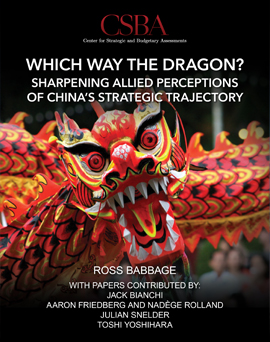Given the rapid pace of change throughout Asia in recent decades, assessing China’s longer-term trajectory – and that of the Indo-Pacific region as a whole – represents a huge challenge for defense and security planners. Attempts to predict China’s strategic posture 15 to 30 years from now are hampered by a far more volatile security environment than that which governed the Cold War era. Yet in spite of the many strategic dislocations of the 21st century, most Western policymakers continue to rely upon the periodic strategic assessment principles regarding China that were practiced during the relatively stable late 20th century. The resulting policies are frequently and necessarily revised in the face of contemporary economic, political, and even epidemiological disruptions.
In Which Way the Dragon?, CSBA Nonresident Fellow Ross Babbage and colleagues argue for a new, scenario-based approach to defense and security planning in the Indo-Pacific. Drawing upon expert analysis of current conditions, three to four overarching scenarios for China should be considered as potential guideposts over the next 15 years. Each outcome would include a series of lead indicators, allowing analysts to determine which future scenario China is headed towards, prepare for potential alternatives in advance, and make adjustments to strategies, operational concepts, and military and security systems when necessary. The end result should markedly reduce the uncertainties about the strategic environment in the 2035 timeframe and provide greatly improved foundations for confident decisions on security policy and capability development. In short, this approach offers a superior way of addressing the security challenges faced by the Western allies and their security partners in the Indo-Pacific.

No comments:
Post a Comment